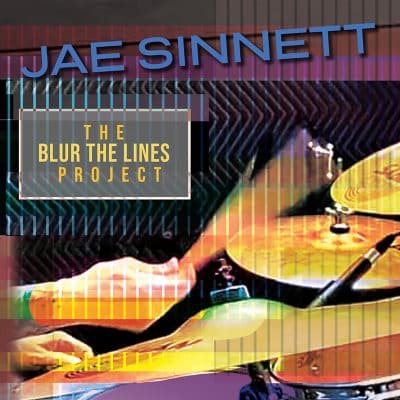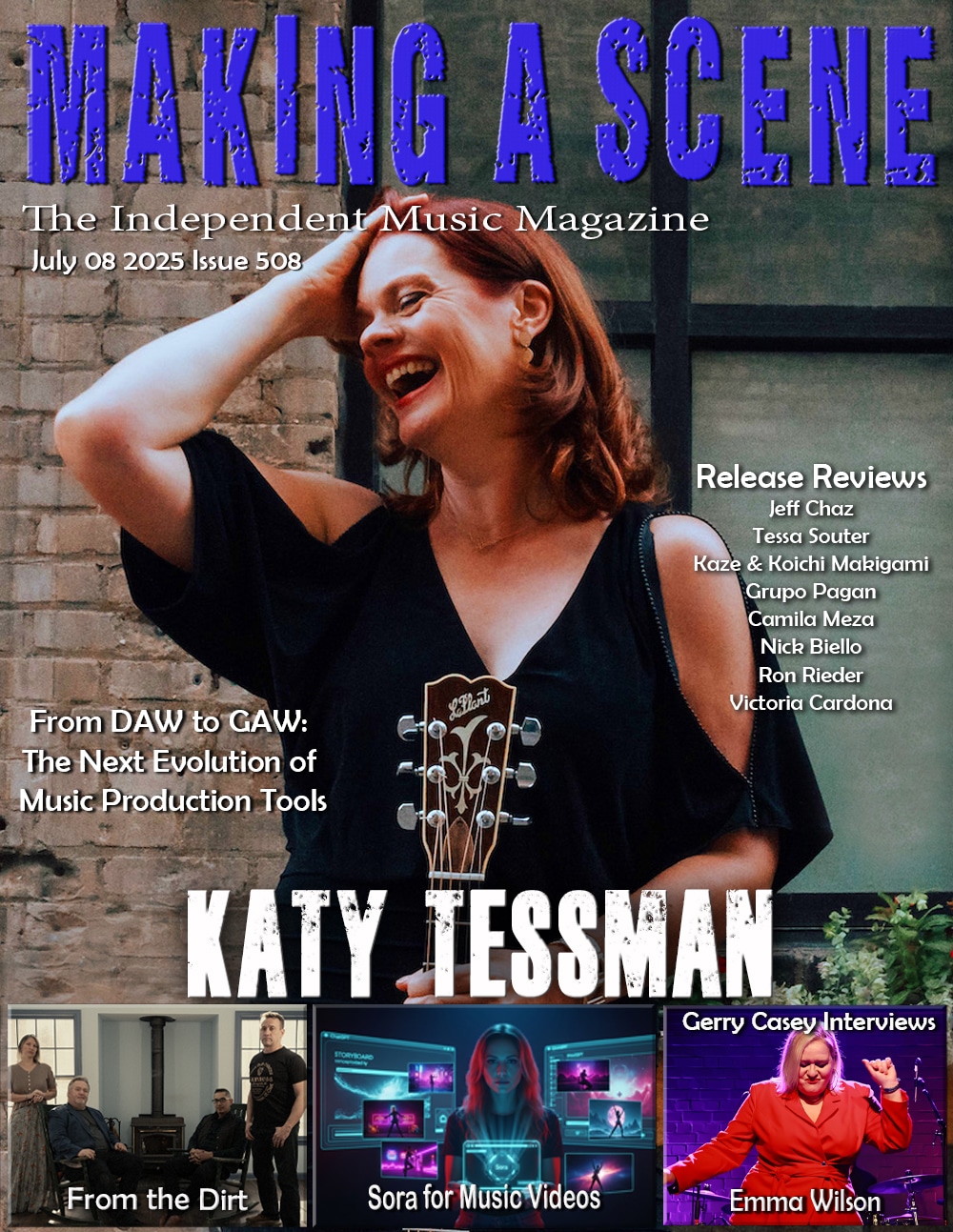Jae Sinnett The Blur the Lines Project

Jae Sinnett
The Blur the Lines Project
Self-released
Jazz-rock fusion is a sub-genre not to be confused with versatile, veteran drummer Jae Sinnett’s The Blur the Lines Project where he interprets classic rock songs through the lens of jazz musicians, thereby fusing rock with jazz. Sinnett’s effort is every bit as loud as those rock songs were as he leads a quintet of tenor saxophonist Ada Rovati, keyboardist Allen Farnham, guitarist Jason Cate, and bassist Terry Burrell. Both Farnham and Burrell, members of Sinnett’s longstanding Zero to 60 qquartet, appeared on his 2023 Commitment, a straight ahead jazz album with Randy Brecker as special guest, covered on these pages. Interestingly, it’s Brecker’s wife, Rovati, who appears here. In that same review, we provided a capsule bio on Sinnett, so we will not repeat that again. Nonetheless, this highly recognizable fare provides ample opportunity for Sinnett to display his ample chops in these rock songs.
The album runs pretty short in length, around 37 or 38 minutes across just six songs. Sinnett maintains the melodies of these songs through instrumentation that often varies greatly from the originals while allowing room for his band to do what they do best, improvise. Keep in mind that Sinnett doesn’t simply imitate these great drummers either. In most cases, he brings just as much power but his eighth note attacks and angular rhythms speak more to his jazz sensibilities. Nonetheless, it’s a project that he’s had in mind for some time as he began as a rock drummer. So, we have a program of Rush’s anthemic “Tom Sawyer,” Rare Earth’s “I Just Want to Celebrate,” The Edgar Winter’s Group “Frankenstein,” Steppenwolf’s “Magic Carpet Ride,” Deep Purple’s “Hush,” and from his favorite rock band, Led Zeppelin, we have “Immigrant Song.”
Fortunately we have a rather detailed Facebook post from Sinnett that describes these choices. We have our favorites that conjure certain memories and highlights of adolescence and hence Sinnett comments for example on “Magic Carpet Ride” – “was the first song I listened to with black light posters and weed. Ha!” On the other hand, he confesses to be a late arrival to the music of Rush, drawn there by an interview with their late drummer, Neal Peart. Once he started to listen to Peart’s playing, he was hooked, though not on their catalog on music per se but certainly the timeless “Tom Sawyer.” Given that Sinnett was initially drawn to blues-based bands (i.e. Led Zeppelin), he admired the blend of R&B and rock as well as Rare Earth’s “one of the first great singer/drummers, Peter Rivera (Hoorelbeke) of Rare Earth.
The background to Edgar Winter’s “Frankenstein” though is especially intriguing, with this excerpt borrowed and partially paraphrased from Virginia’s VEER magazine. The origin of the song, first called “Two Drum Song” was that it was an instrumental used for warm-ups during sound checks. With some time remaining in the recording session for They Only Come at Night, Rick Derringer suggested recording the song. The band played straight through on the recording with Winter adding extra instruments in the overdubs. Apparently high while partying with friends in the production roo, the band cut the tape of the song in sections and draped it over furniture in the studio. (Maybe Sinnett learned this through an interview with Winter as he is also a DJ). In any case, Derringer spliced some of the tape sections together and it was added to the album as “Frankenstein.” It became a huge hit on the singles chart in 1972.
Directly from the VEER piece, we have this – “For Sinnett’s version, he and his bandmates digitally recorded their arrangement in sections and then edited them together, unknowingly keeping with the spirit of the original. Saxophone, organ, guitar largely replace the synthesizers Winter used in the original, but the “Blur the Line” version nicely maintains the same intensity and Sinnett brilliantly nails the drum solo section. Then Sinnett and crew veer off on an acid jazz tangent, slow the tempo way down with off-tone piano, and then bring it all back to the familiar melody.”
In his Facebook post, Sinnett speaks to challenging groove of “Hush” (wherein guitarist Cate unleashes his fury) and “Immigrant Song” (where his drumming is superbly relentless and his Take 6-like vocal arrangement is ingenious)) but he stands by “Frankenstein” as having one of the best rock riffs ever.
This writer is hardly a true classic rock fan but relates mostly to the Steppenwolf (check out Farnham’s terrific organ in this one) and Led Zeppelin tracks. Somehow it all feels familiar though, given the prominence of both AM and FM radio in those hazy days. If you’re a classic rock fan, perhaps you’ll dig it even more as Sinnett puts his stamp on these hits..
– Jim Hynes
Buy Us a Cup of Coffee!
Join the movement in supporting Making a Scene, the premier independent resource for both emerging musicians and the dedicated fans who champion them.
We showcase this vibrant community that celebrates the raw talent and creative spirit driving the music industry forward. From insightful articles and in-depth interviews to exclusive content and insider tips, Making a Scene empowers artists to thrive and fans to discover their next favorite sound.
Together, let’s amplify the voices of independent musicians and forge unforgettable connections through the power of music
Make a one-time donation
Make a monthly donation
Make a yearly donation
Buy us a cup of Coffee!
Or enter a custom amount
Your contribution is appreciated.
Your contribution is appreciated.
Your contribution is appreciated.
DonateDonate monthlyDonate yearlyYou can donate directly through Paypal!
Subscribe to Our Newsletter
Order the New Book From Making a Scene
Breaking Chains – Navigating the Decentralized Music Industry
Breaking Chains is a groundbreaking guide for independent musicians ready to take control of their careers in the rapidly evolving world of decentralized music. From blockchain-powered royalties to NFTs, DAOs, and smart contracts, this book breaks down complex Web3 concepts into practical strategies that help artists earn more, connect directly with fans, and retain creative freedom. With real-world examples, platform recommendations, and step-by-step guidance, it empowers musicians to bypass traditional gatekeepers and build sustainable careers on their own terms.
More than just a tech manual, Breaking Chains explores the bigger picture—how decentralization can rebuild the music industry’s middle class, strengthen local economies, and transform fans into stakeholders in an artist’s journey. Whether you’re an emerging musician, a veteran indie artist, or a curious fan of the next music revolution, this book is your roadmap to the future of fair, transparent, and community-driven music.
Get your Limited Edition Signed and Numbered (Only 50 copies Available) Free Shipping Included
Discover more from Making A Scene!
Subscribe to get the latest posts sent to your email.










